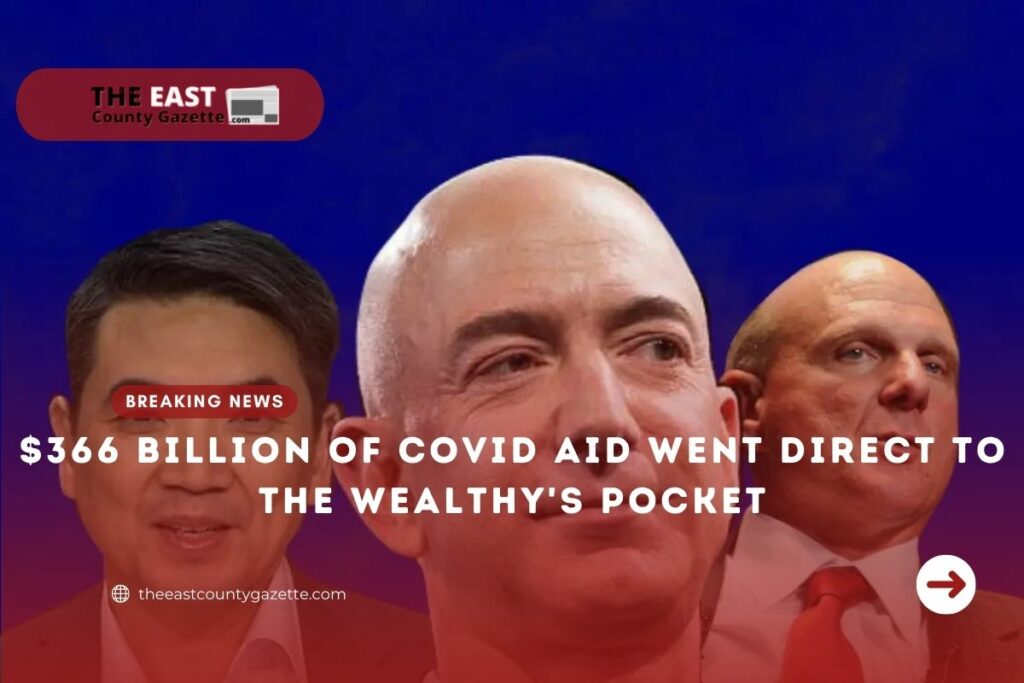Congress has become more adept at preventing recessions from destroying economies. Congress provided hundreds of billions of dollars in stimulus money during the last two years to help lift the economy out of the COVID recession, but little benefit was granted to the average worker.
According to AOL, new research from MIT economist David Autor and colleagues shows that Paycheck Protection Program, Congress’ $800 billion aid package passed in March 2020, was among the most expensive but least effective measures taken by Congress to combat the COVID recession.
Workers were supposed to benefit from the PPP by keeping their employers afloat. Nearly all U.S. businesses with 500 or fewer employees could access low-interest loans. As such, Money from the fund was used to keep workers on the payroll, to hire back laid-off workers, and otherwise to keep the lights on and the lights on. According to the terms Congress established when it passed the program, Congress is likely to forgive most of those loans.
The PPP played a significant role in hastening the end of the COVID recession in 2020. Approximately 3 million jobs were preserved by the program in the second quarter of 2020, but a smaller number was preserved in the subsequent quarters. In addition, smaller businesses were able to continue making payments for equipment, furniture, and supplies.
Read More: New Bonus Checks Coming Out, Find Out Who Are Eligible?
Program With Remarkable Openness
Nevertheless, the Autor study found that “the distribution of Paycheck Protection Program loans overwhelmingly accrued to high-income households.”
The reason is that most of the money was given to wealthy business people and shareholders. Many of those funds did not find their way to workers, a result that could alter the way Congress structures fiscal stimulus in the future.
In 2020, the government issued $510 billion in PPP loans, but only $144 billion went to the bottom 80% of earners, according to Autor. The remaining $366 billion went to the top 20% of earners.
By using these funds, businesses were able to preserve and boost their value. This probably even helped the economy in the U.S. Nevertheless, it was not the “paycheck protection” the law promised.
Two other large COVID relief programs were also carried out. Those two programs overwhelmingly benefitted the bottom 80% and the bottom 40% of earners.
Fiscal aid Congress has used in the past includes stimulus checks and expanded jobless aid. PPP is a new form of aid. The 2020 recession was a single-cause event, unlike most recessions, which develop gradually. In just two months, the unemployment rate grew from 3.5% to 14.8% as businesses shut down and consumers huddled at home. During the economic crisis, the PPP aimed to keep businesses afloat until recovery took place, as well as prevent a wave of bankruptcies that could strain the credit system.
A remarkably generous PPP program resulted from the urgency of the problem. Small businesses could get loans without proving any financial need whatsoever. Congress approved the third round of PPP loans in 2021, which changed that. After that, any company seeking a second PPP loan had to show that it was in need of the funds.
Faster Money Flow in Exchange For Tradeoffs
The tradeoff for injecting large amounts of money quickly into the economy is that money is untargeted and doesn’t necessarily benefit those who need it most. A 2021 study by the Dallas Federal Reserve, for example, revealed that workers in some areas where COVID was severe suffered relatively little PPP assistance. In part, this is because banks administer the loans and tend to arrange them with businesses they already know. Some businesses without existing banking relationships may have been desperate for a loan but were at the back of the line.
PPP did, nonetheless, help the labor market recover, according to the Dallas Fed, which called it “a qualified success.” In one sense, it was better than the “back door bailouts” the Federal Reserve and others implemented during the financial crisis of 2008 and 2009.
Financial firms without a risk of failure received billions of dollars in taxpayer money through loopholes without Congress’s explicit approval. At a time when unemployment, foreclosures, and bankruptcies were surging, a multi-pronged rescue plan meant to prevent widespread bank runs looked like corporate welfare. In the process, an ugly rescue that was nevertheless necessary was met with outrage, which undermined support.
The bailouts of 2008 and 2009 stabilized hundreds of big companies in the hopes that workers would remain employed. However, no requirements were made for companies to protect jobs. Ideally, the PPP should have improved upon that by linking federal aid directly to worker protections. Nonetheless, the latest data indicates that there is still a long way to go. In the event of another recession, Congress may direct these funds more carefully to the most vulnerable businesses at the beginning.
The Autor study also showed that high-income nations, both in Europe and elsewhere, have wage subsidy programs that allow federal agencies to distribute aid more rapidly during times of recession.
Read More: White House: Omicron Will Make the Latest Jobs Data Look Ugly
In the U.S., unemployment insurance is used to help workers who lose their jobs, however other systems — in other countries — are designed to keep workers employed even if they earn less and work less during periods of economic contraction.
As a result, workers and employers remain connected, making the road to recovery easier. A similar system in the U.S. would also make subsidizing workers easier instead of relying on business owners. Perhaps, this could be useful during future recessions.

